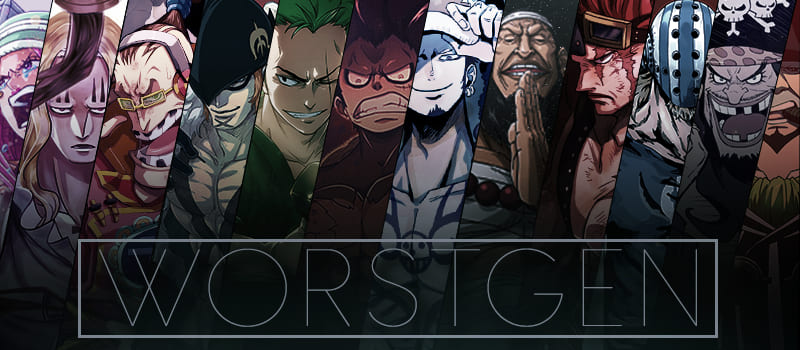Kishi moto is a giant hack.
Orochimaru, Jiraiya and Tsunade are almost lifted straight from Japanese legend, from The Tale of the Gallant Jiraiya, which tells of a ninja who can transform into a toad who is in love with a Princess who uses snail magic and who is forced to battle a form comrade turned enemy who uses snake magic. The character relationships and summons directly mirror the tale.
Orochimaru: Orochimaru’s name has significance beyond that of the Tale of Gallant Jiraiya; Orochi literally means ‘great snake’ and there are many other Japanese and Asian legends that are linked to snakes, that are appropriate to his character such as those related to immortality and re-birth, most poignantly in that of the eight-headed serpent and Susanno described in the Sharingan Jutsus section, which is also where the legend of the Kusanagi sword used by Orochimaru.
Sarutobi: As stated above is the name of a legendary ninja and literally means ‘monkey jump’, which is also indicative of the third hokage, Hiruzen’s animal summons, Enms
Kamatari/Kamaitachi: Temari’s summons, a weasel with a scythe and an eye patch is lifted pretty much straight from the myth of Kamaitachi, a weasel spirit that travelled on the winds and cut unsuspecting victims with its claws or scythe
Raijin and Fujin: The elemental alignment of the two main charcters in Naruto is also very symbolic, with Nartuo’s wind ability and Sasuke’s lightening ability mirroring that of Fuujin and Raijin, the Japanese gods of wind and lightening. They are shown in both Shinto and Buddhist art, and can often been seen acting as guardian at temples or gate across Japan. Fujin is typical shown holding a bag of wind on his shoulders while Raijin is shown with drums used to create thunder. These drums are often decorated with ‘tomoe’ or the 3 comma motif that is also recognisable as being the Sharingan.
Ino-Shika-Cho: ‘Ino-Shika-Cho’ is the known as a winning card hand in the game ‘Hanafuda’, much like a ‘full house’ in Poker etc. Hanafuda – or ‘flower cards’ involves collecting set of winning cards which are each decorated in individual designs. The Ino, Shika, Cho translates as Boar Deer and Butterfly, which as above, has been linked to the characters for other reasons. Perhaps, this also explains the reason for the Yamanaka being florists, further emphasising the symbolism.
The Six Paths of Pain: One of the main features of Buddhism is the belief in reincarnation; the rebirth of a being depending on their levels of good and bad karma. In Buddhist cosmology it is said that six domains or ‘paths’ within the ‘desire’ realm where physical beings that still feel pain and pleasure reside. These are known as deva(god), asura(demi god or demon), human, animal, preta(ghost) and naraka(hell) – although it is important not to confuse these terms with their Western/Judo-Christian definitions – and a being ascends or descend through these levels with each reincarnation depending on their karma, or how they lived their preceding life.
Orochimaru, Jiraiya and Tsunade are almost lifted straight from Japanese legend, from The Tale of the Gallant Jiraiya, which tells of a ninja who can transform into a toad who is in love with a Princess who uses snail magic and who is forced to battle a form comrade turned enemy who uses snake magic. The character relationships and summons directly mirror the tale.
Orochimaru: Orochimaru’s name has significance beyond that of the Tale of Gallant Jiraiya; Orochi literally means ‘great snake’ and there are many other Japanese and Asian legends that are linked to snakes, that are appropriate to his character such as those related to immortality and re-birth, most poignantly in that of the eight-headed serpent and Susanno described in the Sharingan Jutsus section, which is also where the legend of the Kusanagi sword used by Orochimaru.
Sarutobi: As stated above is the name of a legendary ninja and literally means ‘monkey jump’, which is also indicative of the third hokage, Hiruzen’s animal summons, Enms
Kamatari/Kamaitachi: Temari’s summons, a weasel with a scythe and an eye patch is lifted pretty much straight from the myth of Kamaitachi, a weasel spirit that travelled on the winds and cut unsuspecting victims with its claws or scythe
Raijin and Fujin: The elemental alignment of the two main charcters in Naruto is also very symbolic, with Nartuo’s wind ability and Sasuke’s lightening ability mirroring that of Fuujin and Raijin, the Japanese gods of wind and lightening. They are shown in both Shinto and Buddhist art, and can often been seen acting as guardian at temples or gate across Japan. Fujin is typical shown holding a bag of wind on his shoulders while Raijin is shown with drums used to create thunder. These drums are often decorated with ‘tomoe’ or the 3 comma motif that is also recognisable as being the Sharingan.
Ino-Shika-Cho: ‘Ino-Shika-Cho’ is the known as a winning card hand in the game ‘Hanafuda’, much like a ‘full house’ in Poker etc. Hanafuda – or ‘flower cards’ involves collecting set of winning cards which are each decorated in individual designs. The Ino, Shika, Cho translates as Boar Deer and Butterfly, which as above, has been linked to the characters for other reasons. Perhaps, this also explains the reason for the Yamanaka being florists, further emphasising the symbolism.
The Six Paths of Pain: One of the main features of Buddhism is the belief in reincarnation; the rebirth of a being depending on their levels of good and bad karma. In Buddhist cosmology it is said that six domains or ‘paths’ within the ‘desire’ realm where physical beings that still feel pain and pleasure reside. These are known as deva(god), asura(demi god or demon), human, animal, preta(ghost) and naraka(hell) – although it is important not to confuse these terms with their Western/Judo-Christian definitions – and a being ascends or descend through these levels with each reincarnation depending on their karma, or how they lived their preceding life.
